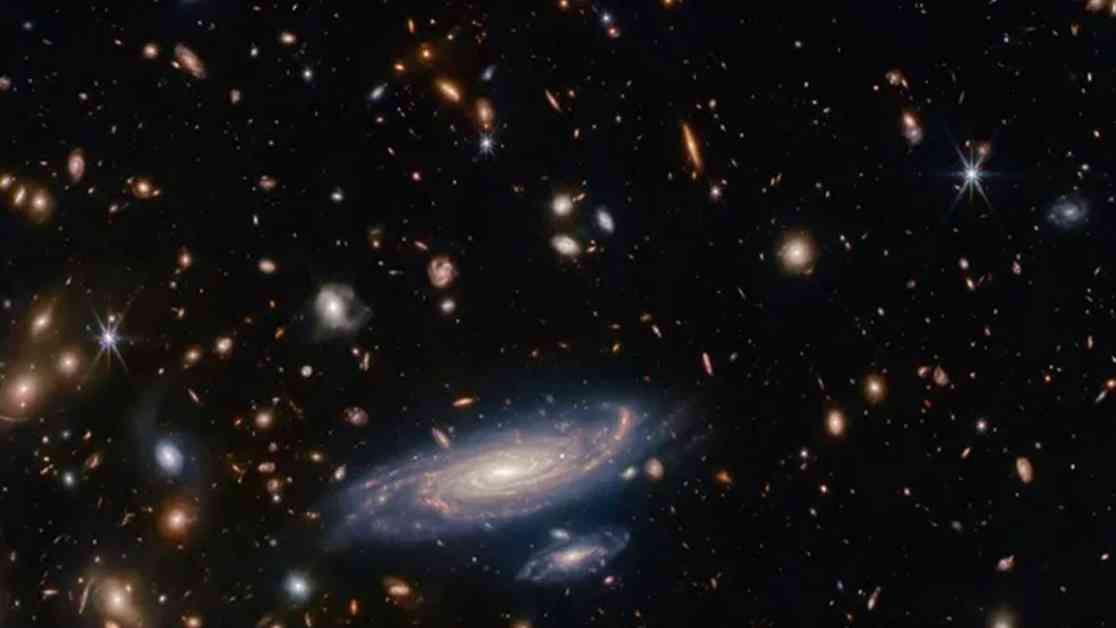The James Webb Space Telescope (JWST) has made a fascinating discovery of a unique “inside-out” galaxy in the early universe. This galaxy, known as JADES-GS+53.18343?27.79097, emerged just 700 million years after the Big Bang and is significantly smaller than our Milky Way galaxy. What sets this galaxy apart is its unusual growth pattern, where stars formed more rapidly on the outskirts than in its dense core.
Scientists had theorized the existence of such inside-out galaxies in the early universe, but the dust and gas surrounding them made them difficult to observe. With the capabilities of the JWST, researchers were able to confirm these predictions by spotting the earliest known inside-out galaxy. Their findings were published in the journal Nature Astronomy on October 11.
The discovery of this galaxy opens up new questions about how galaxies evolve over cosmic time. While current understanding suggests that galaxies grow by forming new stars or merging with smaller galaxies, the mechanisms at play in the early universe remain unclear. The JWST’s ability to peer back billions of years in time allows astronomers to explore the first billion years of cosmic history and investigate these unknowns.
By analyzing ancient galaxy data collected during the JWST’s JADES survey, researchers were able to uncover the unique characteristics of this inside-out galaxy. The galaxy’s dense core is surrounded by a disc of gas and dust where stars are rapidly forming, causing the galaxy to expand at a much faster rate than the Milky Way. As these stars migrate towards the core, they accelerate the galaxy’s spin, resembling an ice skater pulling their arms in.
Now that this inside-out galaxy has been identified, researchers are eager to search for similar galaxies to better understand the growth processes of galaxies in the early universe. By studying different galaxies across cosmic time, they hope to reconstruct the growth cycle and shed light on how galaxies reach their current sizes.
In conclusion, the discovery of the inside-out galaxy by the James Webb Space Telescope marks a significant milestone in our understanding of galaxy evolution. This finding not only confirms theoretical predictions but also raises new questions about the early universe and the mechanisms driving galaxy growth. The ongoing research and exploration of similar galaxies promise to provide valuable insights into the cosmic history of our universe.










